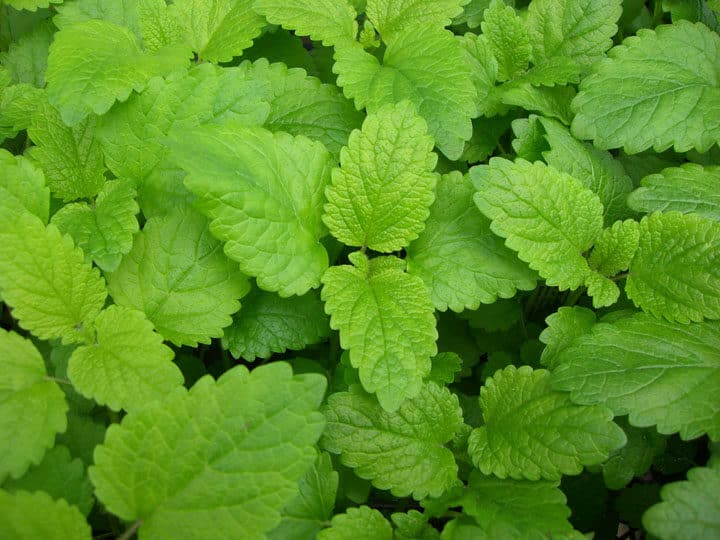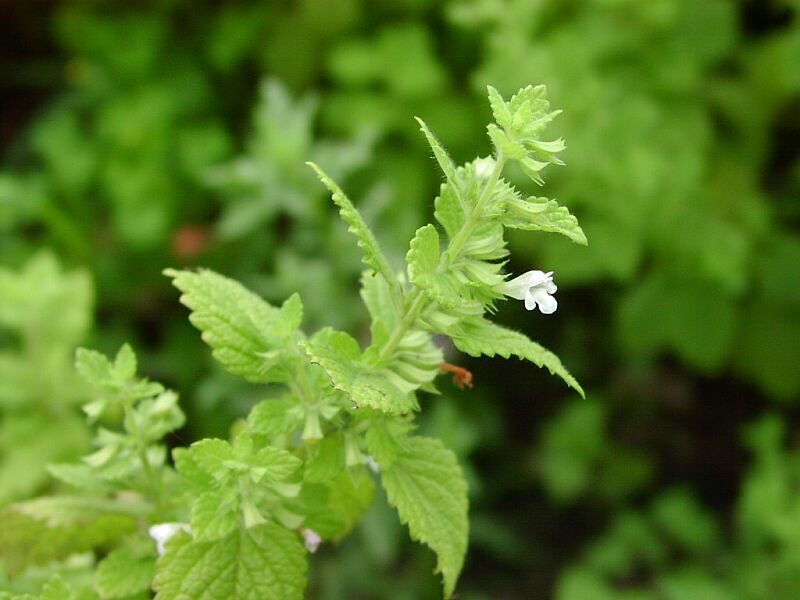
10 Apr Learn About… Lemon Balm
“Learn About…” is a recurring post where we’ll look at lesser known herbs, greens, etc., and discuss their origin, health benefits, and everything in between!

The hint is in its name; lemon balm, or Melissa officinalis, has a—you guessed it—lemony flavor! It is a member of the mint family, and has been incorporated in medicinal and culinary uses for thousands of years.
Lemon balm is native to south-central Europe, North Africa, the Mediterranean, and Asia. But you may have seen it before on your hikes, as lemon balm grows wildly. They require mild temperatures to grow, and are resilient little things, as though they die off during the winter, they grow back during the spring.
Like mint, it grows as much as mint, and if you’ve grown mint before, well, you understand that you should give lemon balm its own pot.
It’s also often called bee balm, but don’t confuse it with the actual bee balm, which is another plant itself.

Lemon balm has been used in for treatment of gastrointestinal tract, nervous system, bile, and liver disorders, and is hugely popular in aromatherapy (which may explain as to why the scent is so familiar). It’s also proven to improve moods and mental performance, and even contains antibacterial and exceptional antioxidant properties.
If you’re going camping, lemon balm is a great natural alternative; its crushed leaves make a great mosquito repellent.
So, how should you start incorporating lemon balm into your diet?
Lemon balm has a light lemon flavor, and can be used in just about any dish, from garnishing a plate, to being tossed into a salad.
Its subtle citrus aroma is perfect for seafood, and goes well with many spices, including chervil, pepper, thyme, and parsley.
Want more ideas? Try these recipes below!

Lemon Balm and Cashew Pesto
Ingredients
2 cups fresh lemon balm leaves, packed
1 cup fresh parsley leaves, packed
3 medium garlic cloves, peeled
1/4 cup raw cashews
1/2 cup extra virgin olive oil
1/4 cup freshly grated Parmesan-Reggiano or Romano cheese
juice of 1 fat lemon (seeded)
fine sea salt and freshly ground black pepper to taste
Method
1. Combine herbs, garlic, and cashews in food processor and pulse a few times.
2. With the food processor running, slowly pour in the olive oil. Turn it off and scrape down the sides of the food processor with a rubber spatula.
3. Add the lemon juice and grated cheese and pulse again until blended. Taste and salt and freshly ground black pepper, if you like.
4. Pack into glass jar(s) and top with a little olive oil for storing in the refrigerator (where it should last a few weeks). Or, use appropriate containers and store for a longer-term in the freezer (if doing this, I’d omit the cheese from the recipe and add it after you’ve defrosted the pesto).
5. Pesto is great on pasta, of course, but it is also lovely mixed with steamed or sauteed veggies, spread on cooked fish or chicken, mixed with beans, in sandwiches, on potatoes … it’s pretty much good anywhere.
Lemon Balm Cookies
From On Bramble Hill
Ingredients
1/2 cup of softened butter
1 cup of sugar
2 eggs
1 tablespoon fresh chopped lemon balm (or 1 tsp dried)
1/2 teaspoon lemon oil (I opted to use a heap of grated lemon instead)
1 1/2 cup of flour
2 tsp baking powder
1/2 tsp salt
Method
Mix it all together in that order….poof! Yummy cookies!
Bake at 350 degrees for 8-10 minutes.
Lemon balm can be grown in an Urban Cultivator, and only about a month to grow. It’s one of the many varieties of microgreens, vegetables, and herbs that you can grow in an Urban Cultivator unit that simultaneously lets you try new foods!
Learn how to grow lemon balm in an Urban Cultivator below:
What do you like to do with your lemon balm? Let us know in the comments section!

